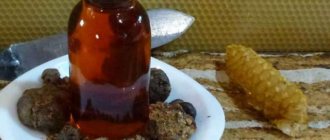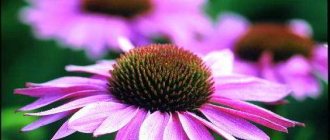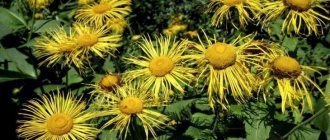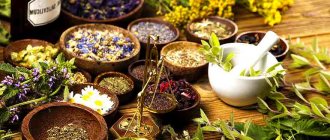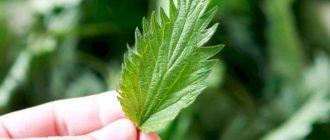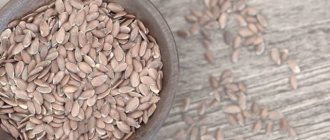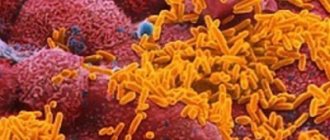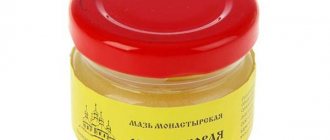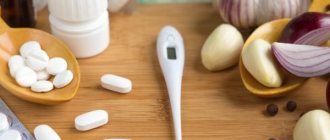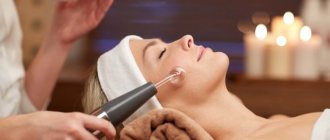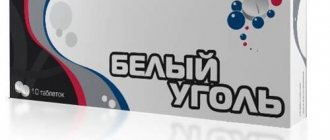Horse chestnut: medicinal properties and contraindications
What is treated with horse chestnut, and what properties does it have? It has found application in medicine and cosmetology. The beneficial properties of this mighty tree are very extensive, and the indications for use are quite an impressive list. There are also contraindications, but first things first. If we consider horse chestnut as a medicine, we should understand in more detail all aspects of the issue and study its chemical composition.
Expert opinion:
Horse chestnut seeds and tree bark contain saponins (triterpene glycoside) with a complex structure (escin, artrescine, fraxin, esculin, coumarin), as well as a large amount of flavonoid glycosides (quercetin triosides, quercitrin, isoquercitrin, kaempferol). In addition, groups of vitamins B, C, E, K, starch and fatty oil.
Horse chestnut flowers are also used, because their rich composition gives them certain physical and chemical properties. Flowers contain: kaempferoglycoside, flavonoids (rutin, quercetin, astragalin), triterpene saponin. Moreover, they are rich in sugars, tannins and choline.
Ratios for the use of medicinal plants for the treatment of varicose veins
In addition to the above active components, this plant has a rich complex of macro- and microelements, as well as minerals. You can voice such elements as iron, calcium, nickel, boron, chromium, zinc, barium, iodine, selenium and silver. Therefore, due to their unique composition, preparations containing horse chestnut are widely used in the treatment of various painful conditions.
In order for the positive effect of the inflorescences, seeds, bark and leaves of the tree to be maximum, it is important to prepare them correctly. The collection of inflorescences and foliage for medicinal purposes begins in late spring and ends in early autumn. Tree bark is collected in the spring after trees are pruned. They remove it from branches whose age does not exceed 3-5 years. Seeds (fruits) are harvested as they ripen and immediately fall. Drying occurs either in special dryers or in designated rooms with moderate ventilation and without direct access to sunlight, which is detrimental to beneficial properties.
Horse chestnut: medicinal properties
As mentioned earlier, this plant has a solid list of medicinal properties. For example, an extract from horse chestnut seeds has decongestant, venotonic, antithrombotic and anti-inflammatory effects. Therefore, it is used for inflammatory processes in blood vessels, varicose veins and trophic ulcers. Medicines and preparations based on horse chestnut help both against varicose veins and are used in complex therapy in the treatment of hemorrhages, hypertension (Hypertonia) and other diseases due to their diuretic, hemostatic and wound-healing properties.
Horse chestnut: contraindications
The healing properties of the plant are like one side of the coin, the other is contraindications. Unfortunately, they exist and it is important to know about them. After all, before using horse chestnut, it is important to familiarize yourself with this information. First of all, it is worth noting that contraindications directly depend on the dosage form and the composition of the product used as a whole. Medicines from horse chestnut and drugs taken orally, both for veins and for other purposes, are contraindicated for use by people:
- with stomach ulcers;
- with pathologies of the urinary and intestinal systems;
- with chronic liver pathologies;
- with low blood pressure;
- in infancy and childhood;
- during gestation and lactation (Lactatio) (there are exceptions);
- for menstrual irregularities.
Of course, you can only get complete information about the possibility of taking a particular drug from your attending physician.
About the chestnut doctor
September-October is the time to collect chestnut fruits; they are already freely released from their “thorny prison” and fall abundantly at our feet. And we throw them up, play with them, trample them, often not suspecting how much benefit we could get from them. Children are more internally sensitive, they collect these shiny nuts, put them in their briefcases and pockets, and bring them home.
And it’s not in vain! Even just having a chestnut fruit in your pocket brings benefits: it calms, harmonizes the state of a person’s nervous system, and feeds him with energy. And they say it also reduces pain in the joints and stiffness of the spine.
Horse chestnut: application
The healing properties that horse chestnut has give it a fairly wide range of application. It is valued by the beauty industry and is used in cosmetics for the face and body, in hair masks, and also helps get rid of cellulite. In pharmacy kiosks you can find various creams, ointments and gels for feet based (with extract) of horse chestnut. A drug based on horse chestnut will help in the treatment of thrombophlebitis (Thrombophlebitis), radiculitis (Radiculitis), prostatitis (Prostaritis), neuralgia (Neuralgia), leukosis (Leukosis), bronchitis (Bronchitis), radiation sickness, tuberculosis (Tuberculosis) and many other diseases. In general, the benefits of using horse chestnut are quite great:
- elimination of edematous syndrome and foci of inflammation;
- decrease in blood viscosity;
- preventing the formation of blood clots;
- increased venous tone;
- acceleration of blood flow in vessels;
- reducing the permeability of capillaries and the formation of stasis in them;
- lowering blood pressure;
- removal of cholesterol plaques, salt, toxins and radionuclides;
- improvement of the gastrointestinal tract (normalization of acidity, food absorption, etc.).
Horse chestnut extract
In pharmacies you can buy powder from horse chestnut seeds - a dry extract (an extract of medicinal raw materials from the plant). It has a specific smell and bitter taste. The basis of the powder is escin (Aescine) - the most valuable component of the plant, which has an anti-inflammatory and anti-edematous effect, which is especially important in the treatment of varicose veins. There is also aqueous, hydroalcoholic and glycerin extract.
Expert opinion:
Although saponins are extremely beneficial for vascular health, contact with them can be hazardous to health if used incorrectly. Thus, saponins can irritate the mucous membranes of the nose, eyes, and genitals; if ingested, cause nausea and digestive disorders.
Indications for treatment with horse chestnut in a liquid solution are varicose veins, chronic venous insufficiency and their complex therapy, combating fungal diseases, protecting the skin from harmful ultraviolet rays, etc. The benefits of horse chestnut in the form of liquid extract are basically the same as as from the use of other means. The choice of release form is determined by the goals; in this regard, horse chestnut fruit extract is convenient for baths. Using warm baths with the addition of liquid horse chestnut concentrate will have a beneficial effect on the entire body. Fatigue in the legs will go away, swelling will go away due to the removal of fluid from the subcutaneous tissue, microcirculation will improve, the walls of blood vessels will strengthen, and damaged areas of the skin will begin to recover. The duration of such a bath is no more than 10-15 minutes.
Horse chestnut seed extract is often used for vascularity by bodybuilders. Such a characteristic as venousness in bodybuilding is quite important and serves as one of the criteria for judging at competitions. Athletes purposefully develop arteries, capillaries and venous vessels. But an unpleasant consequence of this phenomenon can be varicose veins, so achieving this criterion is associated with great risk.
Horse chestnut fruits: medicinal properties and use for varicose veins
Horse chestnut has a positive effect on veins and fights against the manifestations of varicose veins, this is a proven fact. Depending on the method of treatment, the fruits are used in a variety of forms - dry, fried, powdered, in infusions, etc. They stimulate the production of antithrombin, strengthen the walls of capillaries and reduce their permeability, and improve blood flow to the venous vessels.
Horse chestnut oil: healing properties
Horse chestnut oil and its uses
This pharmacological form is made from an extract of inflorescences and fruits of the plant in combination with grape seed oil. Why and how to use horse chestnut in oil concentrate? With its help, you can get rid of rosacea, excess subcutaneous fat layer, or make a compress for swelling - to do this, you need to soak a gauze cloth or bandage folded in several rows with oil and apply it to the affected area of the body. The oil is used both in pure form and in combination with essential oils and creams. It is used for rubbing, wrapping and self-massage. Horse chestnut also promotes relaxation of tired legs and general relaxation when taking a bath; for this you need to add 30 ml of concentrate to the water.
In order to achieve maximum healing and cosmetic effects, it is important to carry out the procedures in courses. Only after a certain period of constant implementation of the procedures will it be possible to note an improvement in the condition of the skin, an improvement in the outflow of lymph and, as a result, the resorption of edema and a reduction in the vascular pattern.
Horse chestnut cream for feet
Horse chestnut exhibits its medicinal properties very successfully in the treatment of varicose veins. All highly effective creams contain horse chestnut. For veins, its effect is expressed in strengthening the vascular walls, improving the functioning of the valve apparatus, preventing the formation of blood clots, and even in the treatment of complications of varicose veins such as the healing of trophic ulcers. There are currently a large number of different variations of creamy venotonic preparations based on horse chestnut on the pharmacological market. So there is a cream, cream-gel, cream-balm that may contain mint, shark oil, leech extract or other components, but they all certainly contain horse chestnut and are based on it.
Specialists of the pharmaceutical company VERTEX created "NORMAVEN®" foot cream, which has a unique composition of 12 active natural ingredients; one of them is horse chestnut extract. The product has been tested in clinical conditions. It has all the necessary documents and quality certificates. Many women wonder about the benefits and harms of using horse chestnut cream to prevent varicose veins during pregnancy. So, clinical studies of NORMAVEN® foot cream have confirmed its effectiveness and safety of use during pregnancy. After just one month of use, there is an improvement in the condition - the pain syndrome, the feeling of fatigue and heaviness in the legs disappear. The maximum effect is achieved after 3 months of use, when applied to the skin 2 times a day with massaging movements. It should also be remembered that varicose veins and its prevention require an integrated approach. Therefore, it is important to monitor nutrition, physical activity and follow the recommendations of specialists.
Gel and ointment with horse chestnut for varicose veins
Local remedies for varicose veins come in various pharmacological forms and differ from each other in consistency. The gel preparation has a light consistency, while the ointment preparation is, on the contrary, dense, thick and oily. Foot ointment containing horse chestnut has both medicinal properties and contraindications. The latter include the inability to use the product for allergic reactions, renal failure, gastrointestinal diseases, etc.
The gel preparation is based on water, making it easier to distribute over the skin than ointment. Therefore, massage gel-balm for feet is more convenient to use than ointment. As a rule, most products based on horse chestnut have positive reviews.
Unusual recipes: chestnut beads and beer
Traditional healers advise using chestnut beads to cure headaches and joint problems. To make beads, you need to dry twenty-seven chestnuts for the beads and seven for the bracelet. Unusual jewelry must be worn for several hours a day. Surprisingly, the method works and everyone who has tried using chestnut beads notes an improvement in their well-being.
Read
About the benefits and harms of Achatina snails
Another extraordinary recipe for cleansing the body is chestnut beer. It has a powerful effect on the human body: it cleanses of toxins, helps remove heavy metal salts, and fills the body with useful elements: calcium, iodine, cobalt and copper. When the first gray hair appears, drinking the drink helps restore hair color. Drinking invigorates and fills you with strength. Making your own drink is very easy. The recipe is simple and will not cause any difficulties:
- you will need about thirty ripe chestnuts;
- Chestnut fruits must be freed from the brown shell and divided into two parts; if cut into more pieces, the drink will be bitter;
- separated chestnuts should be placed in a fabric bag and placed in water;
- three liters of liquid are required, in which a glass of sugar and twenty grams of sour cream are dissolved in advance;
- the mixture is placed in a place protected from bright light for fermentation, it will take about two weeks, plus or minus two days;
- you need to drink a glass of beer every day for a month.
Everyone who has taken the course notes an improvement in their condition and relief from symptoms of disease.
Green horse chestnut for varicose veins: recipes and use in folk medicine
In folk medicine, the treatment of varicose veins with horse chestnut has been used since ancient times; recipes were compiled by healers and healers many centuries ago. A decoction of the leaves and a tincture of horse chestnut peel have rich medicinal properties. There are hundreds of recipes for their preparation and they serve not only for treating veins.
Horse chestnut tincture: a panacea for blood vessels and joint treatment
Horse chestnut decoction and tincture help get rid of stars on the legs due to varicose veins and give good results in the fight against diseases such as lymphostasis. Folk treatment of joints (knees in particular) with horse chestnut tincture is also practiced. How to prepare and take horse chestnut tincture will depend on the disease. For varicose veins, alcohol and water infusion of fruits, inflorescences and leaves of the plant is possible. Horse chestnut is extremely popular, and folk treatment is not limited to preparing a tincture. Teas, ointments, baths, lotions, etc. are prepared for varicose veins and to thin the blood. It is better to ask your doctor for reviews of certain traditional medicine recipes before use. It is better to exclude self-medication.
Expert opinion:
Despite the fact that the use of traditional medicine recipes with horse chestnut gives good results, you need to understand that such remedies cannot fully replace medications. Therefore, the use of horse chestnut tincture for the treatment of varicose veins is possible only at the initial stage of the disease. If you want to use this recipe to treat chronic venous insufficiency in later stages, chestnut tincture can only act as an adjuvant.
Foot cream with horse chestnut
How to harvest chestnuts correctly?
The chestnut ripening period is May-June. But already from the beginning of spring, fragrant flowers appear. Chestnut fruits can ripen until the end of summer, depending on weather conditions. To collect the fruits, it is better to wait for the period when they fall out of the shell on their own, this means that the nut is filled with all the necessary substances and is ready for planting. In order for the fruits to be used for the preparation of medicines, they must be stored properly. To do this, you need to cut the nut into 4 parts and dry it in the oven for an hour. You can also dry it outdoors, but this may take 3 to 5 days. Properly dried fruits can be stored for up to 4 years, and they will not lose their properties.
The bark of the tree should be collected in the spring, and it should be separated from the tree carefully so as not to damage the trunk. The bark also needs to be dried and stored in moisture-proof bags.
To collect chestnuts, it is better to wait until they come out of the shell on their own.
Leaves are the easiest to collect. Both young leaves and leaves before falling are suitable for preparing medicines. The leaves need to be crushed, dried and rubbed with your hands to form a tea.
Read
Millet porridge and its beneficial properties
The flowers can be dried with branches or picked off individually. In this case, it is imperative to keep the flowers intact. Chestnut flowers have a tart aroma and sweet taste, so fresh leaves are often used to prepare decoctions and medicinal teas.
Preparations and medicines with horse chestnut for varicose veins
In cases where treatment from the inside is required, the use of drugs and medications is necessary. They are prescribed by a doctor after reviewing the medical history. As a rule, a specialist recommends taking medications for varicose veins in parallel with the use of drugs that reduce blood viscosity and the use of medical compression stockings. Horse chestnut extract tablets have a number of contraindications. At a minimum, it can cause allergic reactions, with such unpleasant symptoms as hives, itching and rashes on the skin. Therefore, self-medication should be excluded. Only a specialist will be able to correctly select the drug and its dosage regimen.
Sources:
- Atlas of Medicinal Plants of Russia / Ed. V.A. Bykova. - M.: Scientific Research Center BMT VILAR, 2006.
- Abrikosov, Kh.N. Horse chestnut [Text]/ Kh.N. Abrikosov // Dictionary-reference book for beekeepers. – M.: Selkhozizdat, 1955.
- Gninenko, Yu. I. The state of the common horse chestnut in some European countries [Text] / Yu.I. Gninenko, M.A. Golosova, A.M. Zhukov // Forestry. information / M-vo nat. resources. – M., 2003. – No. 7.
- Baraldi C., Bodecchi LM, Cocchi M. Chemical composition and characterization of seeds from two varieties (pure and hybrid) of Aesculus hippocastanum // Food Chemistry. - 2007. - 104. - P.
- https://www.researchgate.net/publication/279636166_Horse_Chestnut_-_Efficacy_and_safety_in_chronic_v…
- https://examine.com/supplements/horse-chestnut/
- https://nccih.nih.gov/health/horsechestnut
- https://www.healthbenefitstimes.com/horse-chestnut/
- https://cyberleninka.ru/article/n/kashtan-konskiy-kashtan-sedobnyy
- https://cyberleninka.ru/article/n/vozmozhnosti-farmakoterapii-narusheniy-venoznogo-ottoka-i-mikrotsirkulyatsii-pri-hronicheskih-zabolevaniyah-ven-nizhnih-konechnostey
- https://cyberleninka.ru/article/n/razrabotka-tehnologii-i-analiza-ekstrakta-zhidkogo-iz-listiev-i-tsvetkov-kashtana-konskogo-obyknovennogo-v-kachestve
For an accurate diagnosis, contact a specialist.
Chemical composition and calorie content, glycemic index, nutritional value
Chestnuts, like rice or potatoes, are high in carbohydrates and starch . It is an active source of energy and is useful for athletes to consume before or after training.
The nut contains vegetable proteins, which makes it indispensable in the diet of vegetarians.
The product is similar to nuts in shape and structure. But it contains significantly less fat and oil components (the figure is below six percent).
Chemical composition of chestnuts:
- fiber – improves the functioning of the digestive system, helps with weight loss, improves intestinal function;
- starch is a type of carbohydrate, one of the sources of energy, tones the entire body;
- tannins are organic compounds that help in the treatment of burns, cuts, and abrasions. They have astringent properties, stop bleeding;
- folic acid – normalizes the emotional background, participates in the metabolism of amino acids, strengthens the immune and cardiovascular systems;
- vitamins A, B, C – support the functioning of all vital organs and systems of the body;
- trace elements : potassium and magnesium, copper, phosphorus, selenium, manganese.
The calorie content of boiled chestnuts is 131 kcal per 100 g. If the product is fried, then this figure reaches 182 kcal. When baked, it drops to 56 kilocalories.
The glycemic index of fruits is 60 units , which is the average. The product affects blood sugar levels (not recommended for people with high insulin levels).
The nutritional value of nuts is 12% protein, 6% fat and 82% carbohydrates.
People often ask: how is red cabbage good for women? You asked - we answer!
You can learn about the health benefits and dangers of buckwheat from this publication.
Our article will reveal the beneficial properties and contraindications of sesame seeds. Find out more!
What are the benefits of edible nuts?
For adult men and women
What are the benefits of chestnuts? Chestnut helps fight a number of diseases that often affect adults: hypertension, thrombophlebitis, hemorrhoids, varicose veins and others.
Eating fruits stimulates the cardiovascular system.
They are useful for women's health during menopause, and help with gynecological diseases associated with stagnation of blood in the pelvis.
The product is suitable for snacking at the workplace . Just 2-3 fruits will energize you and relieve drowsiness.
For children
Are chestnuts good for children? There is no official scientific data on at what age chestnuts should be introduced into children's diets. Experts are inclined to believe that a child’s body can perceive these fruits from four to five years of age .
Nuts are hard food for a child's stomach. If they are given from an early age, problems with the functioning of the entire gastrointestinal tract are possible.
It is best to give pureed fruits made from well-boiled fruits to children over five years of age. They can be added to soups. The product may cause bloating; it is better to consult a doctor before using it.
During pregnancy and lactation
Nuts are prohibited for pregnant women . Fruits actively affect blood vessels. This is unacceptable during pregnancy as it can lead to complications.
In rare cases, it is possible to use decongestant ointments or creams based on the plant, but only after consulting a doctor.
During lactation, the product is not recommended ; it can cause allergies in infants. Nuts are heavy food for a child’s body.
For older people
In the absence of contraindications, fruits are allowed in the diet of older people. How are chestnuts beneficial for the body of older people? They fight atherosclerosis and rheumatism of the joints , which is important for men and women over 60–65 years of age.
Chestnuts are useful for hypertension, thrombosis, and other diseases of the cardiovascular system.
They improve blood flow and resolve atherosclerotic plaques. This is an important prevention of serious diseases (stroke or heart attack).
